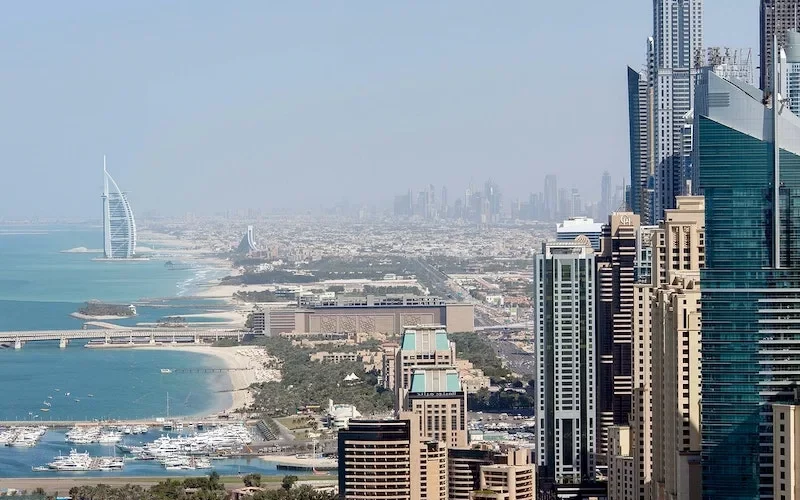The real estate landscape is undergoing a transformative revolution led by innovative property developers. In this article, we will delve into the pivotal role these developers play in shaping the future of real estate. From sustainable designs to technological integration, the impact is far-reaching. Join MyDubai.Media to explore the dynamic changes that are redefining the way to perceive and interact with real estate.
The Rise of Sustainable Communities
Sustainable Architecture: Beyond Aesthetics
Sustainability is no longer a buzzword but a fundamental ethos driving property development. Architects and developers are pushing boundaries to create structures that harmonize with the environment. From green roofs to energy-efficient materials, every aspect is meticulously considered.
Eco-Friendly Infrastructure: Pioneering the Way
Property developers are pioneering the integration of eco-friendly infrastructure. Smart energy systems, water conservation technologies, and waste management innovations are now standard features in modern developments. These initiatives not only benefit the environment but also lead to long-term cost savings for residents.
Success Story
The Story of the UAE’s Largest Developer, Emaar Properties, founded in 1997 by Mohamed Alabbar, is a leading property developer in Dubai and a prominent name in the real estate industry. It symbolizes Dubai’s ambition to become a global hub for business and tourism. The company operates internationally with projects in various countries and actively supports Dubai’s economic development. Sustainability is a core principle, employing eco-friendly technologies. The founder, Mohamed Al Abbar, emphasized quality and comfort in real estate projects. Emaar is behind iconic structures like Burj Khalifa and the luxurious Burj Al Arab Hotel. The Dubai Mall, Address Downtown, and other ventures contribute to Dubai’s status as a premier destination.
Embracing Technological Advancements
Smart Homes: A Glimpse into the Future
The integration of technology into real estate has given birth to the concept of smart homes. These residences are equipped with cutting-edge automation systems, allowing homeowners to control various aspects with a touch or voice command. From security to energy management, the possibilities are endless.
Virtual Reality Tours: Revolutionizing Property Viewing
Property developers are leveraging virtual reality to revolutionize the way properties are viewed. Prospective buyers can now take immersive tours of homes, experiencing every nook and cranny without physically being present. This not only saves time but also expands the reach of real estate marketing efforts.
Community-Centric Designs
Creating Spaces that Foster Connections
Modern property developers recognize the importance of community. Designs now prioritize communal spaces, from parks and recreational areas to co-working hubs. These elements are carefully curated to foster interaction, creating a sense of belonging among residents.
Mixed-Use Developments: A Multifaceted Approach
Gone are the days of single-purpose developments. Property developers are now embracing mixed-use designs that combine residential, commercial, and recreational spaces. This integrated approach enhances convenience and creates vibrant, self-sustained communities.
Real estate infrastructure in the world’s largest cities
New York, London, and Dubai, stands as a testament to the global convergence of architecture, commerce, and culture. NYC (New York City) boasts a skyline punctuated by iconic skyscrapers like the One World Trade Center, offering a blend of historic brownstones and cutting-edge developments. The city’s real estate market is a dynamic ecosystem, with neighborhoods evolving to meet the diverse needs of its inhabitants. London, with its juxtaposition of modern glass structures against classical landmarks like the Houses of Parliament, showcases a harmonious blend of old and new. Its prime real estate addresses, like Mayfair and Kensington, continue to be magnets for investors and high-net-worth individuals seeking both prestige and convenience.
Meanwhile, in Dubai, the real estate landscape defies gravity with audacious creations like the Burj Khalifa and Palm Jumeirah. This desert oasis has become a symbol of opulence and innovation, drawing investors from around the globe. With its forward-thinking urban planning and visionary architecture, Dubai remains a testament to human ambition in the realm of real estate.
Conclusion
The real estate industry is at the cusp of a revolution, and property developers are at the forefront of this transformation. Through sustainable practices, technological integration, and community-centric designs, they are shaping the future of real estate in profound ways. As we move forward, we can expect even more innovative approaches that will continue to redefine our relationship with property.




